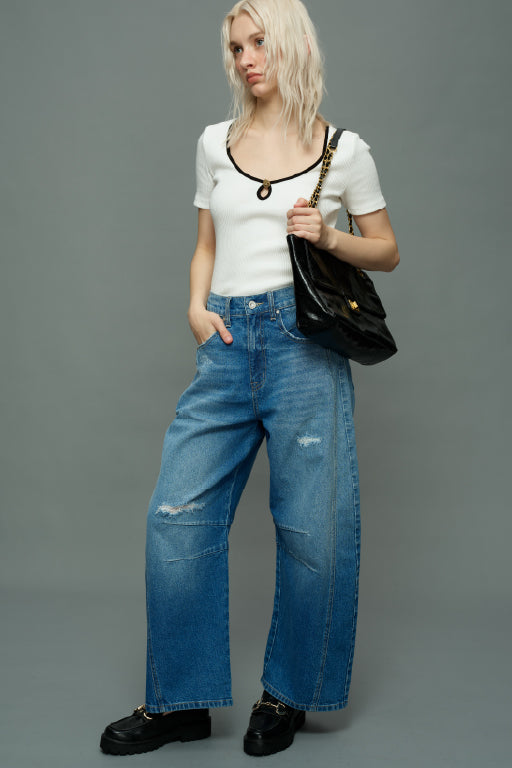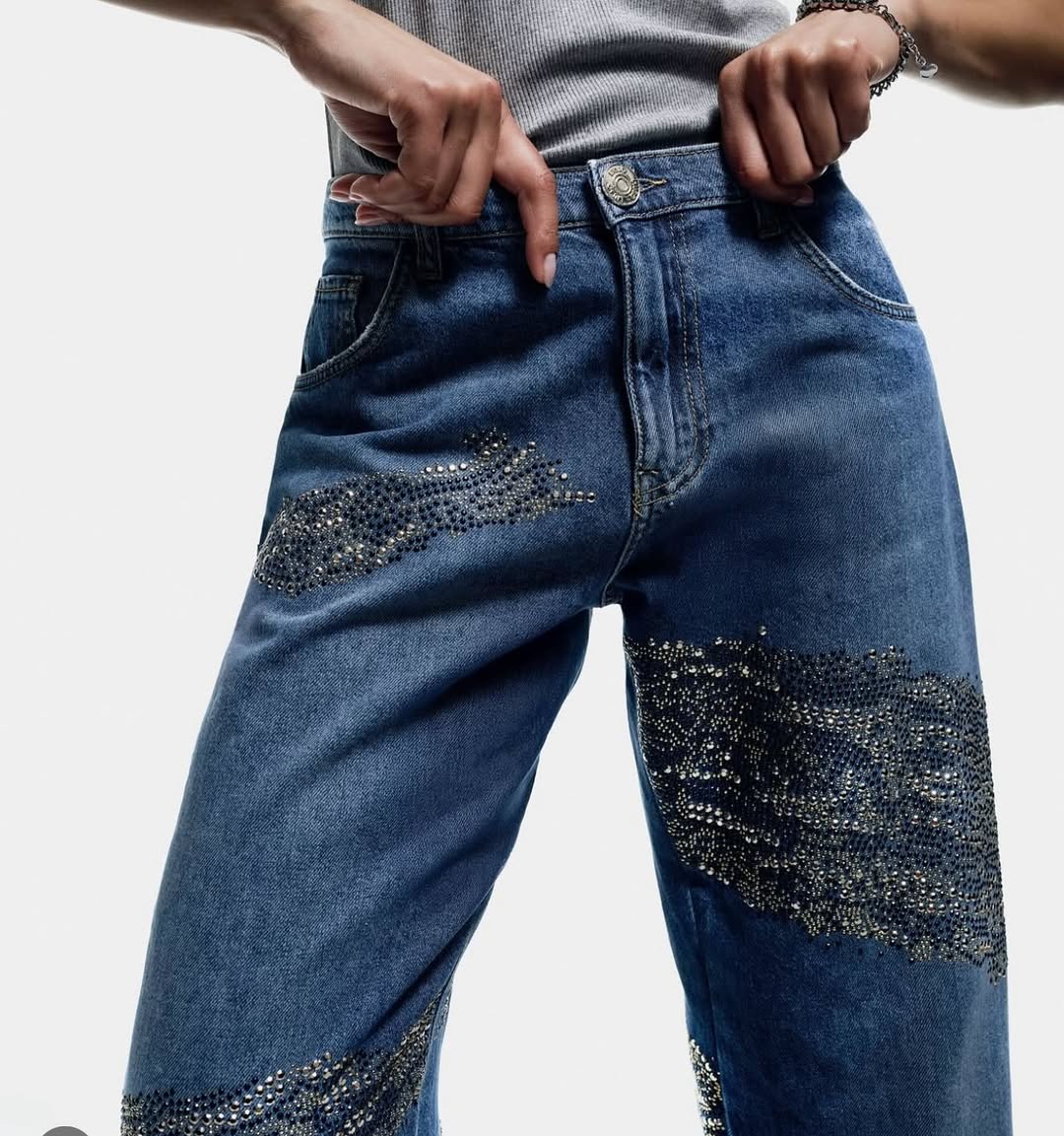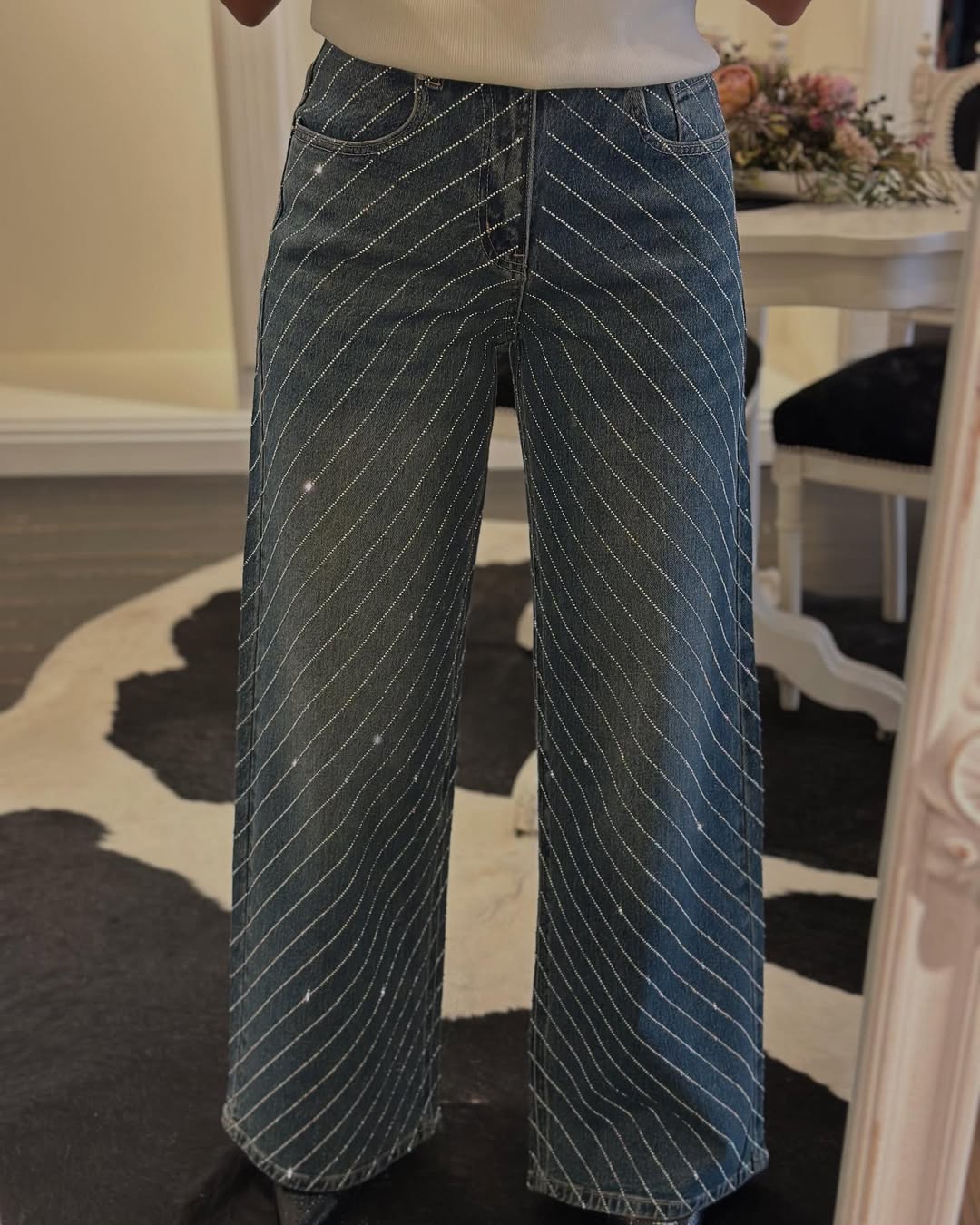Every woman has at least one pair of jeans in her closet. They may be faded and frayed, but they have always held countless stories of growth, adventure and confidence. From the 19th century miner's uniform to the 21st century's fashion icon, the evolution of jeans has almost coincided with the wave of women's liberation. It is not only a piece of clothing, but also a cultural symbol - when women wear it, they are both dressing and writing their own manifesto.
I. Historical Folds: From “Male Patent” to “Female Robe”
When Levi Strauss created the first pair of jeans with canvas and rivets in 1853, they were just the labor clothes of American gold miners. For nearly a hundred years, jeans were associated with masculinity, manual labor and ruggedness, until two social upheavals in the mid-20th century completely rewrote their destiny.
The “Rosie Effect” of World War II: In the 1940s, men went to war and women went to the factories. The overalls became a symbol of female labor heroes, and posters of Rosie the Riveter in rolled-up cuffs and jeans shouted “We Can Do It!”, sewing female power into the warp and weft of denim.
Hollywood's rebel gene: In the 1950s, Marilyn Monroe ran barefoot in jeans in East of the River, and James Dean became a rebel icon with his jeans and leather jacket in Rebel Without a Cause. Although many schools prohibited girls from wearing jeans at the time, they became a “soft weapon” for the younger generation to break gender stereotypes.
Fashion revolution: the reinvention of jeans in a thousand ways
The designer's breakthrough moment: In the 1970s, when Calvin Klein put jeans on the high-fashion runway, Porgy Little asked with a raised eyebrow in an advertisement, “Do you want to know what's between me and my CK jeans? Nothing.” -- A delicate balance of sensuality and power has made jeans a symbol of women's mastery of body discourse.
From single to multiple body narratives: wide-leg, flared, straight, skinny, high-waisted, ripped ...... The history of jean cuts is almost a chronicle of women's body liberation. As brands began to offer styles in different lengths, elasticity and sizes, jeans no longer demanded that women “fit the standard”, but rather proclaimed that “the standard is made for you”.
The Philosophy of Jeans: Why do women need the “perfect pair of jeans”?
The Paradox of Freedom: It seems to bind your legs, but it gives you the freedom of movement - you can wear them to straddle a motorcycle, crouch down to play with your children, or stride around the conference room.
The container of memory: the jeans we saved up for in college, the jeans that got us through the low points of our breakups, the pregnancy jeans that finally no longer need to be rolled up ...... fabric holds the codes of private history.
Metaphors of equality: in the ghetto, Silicon Valley, the African bazaar or the streets of Paris, jeans blur the boundaries of class and place. When women wear them, they are saying, “I have as much right to occupy space as anyone.”
Fourth, wearing is a declaration: a pair of jeans of infinite possibilities
Workplace battlefield: straight jeans with a blazer and pointy heels, gently dismantling the male narrative of “Power Suit” (Power Suit).
The street revolution: ripped jeans + Martin boots + slogan T-shirt, turning the streets into a gallery of attitudes.
Tender rebellion: mom jeans paired with a lace top, finding a balance between vintage and trendy - women don't have to choose between “strong” and “soft”.
Conclusion: The Future of Denim
When Rihanna wears jeans on the Super Bowl stage, when her 90-year-old grandmother proudly displays her 1950s vintage Levi's, when Afghan girls secretly put on jeans to fight against dogma - jeans have long transcended fashion and become a global language of women. It teaches us that true freedom is not about throwing off all restraints, but about having the right to choose how you define yourself.
The next time you button up your jeans, say to yourself:
“It's not just about dressing, it's about fighting.”



